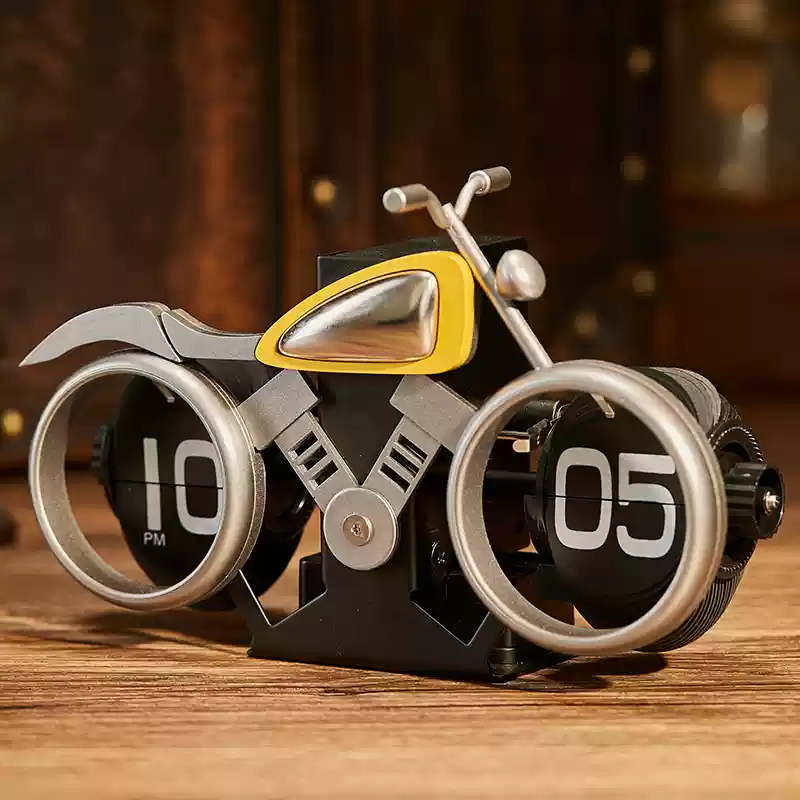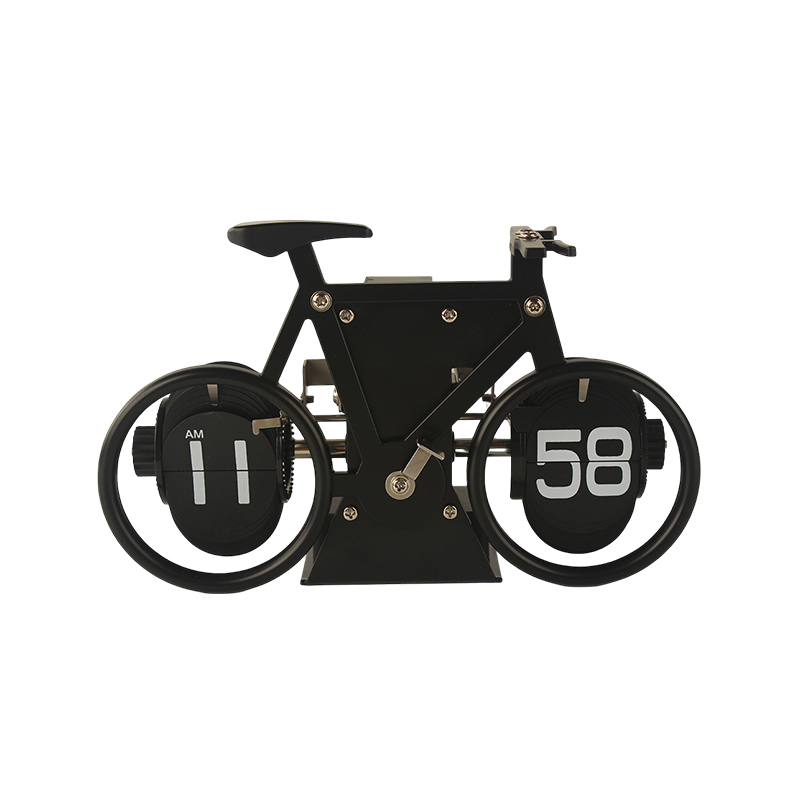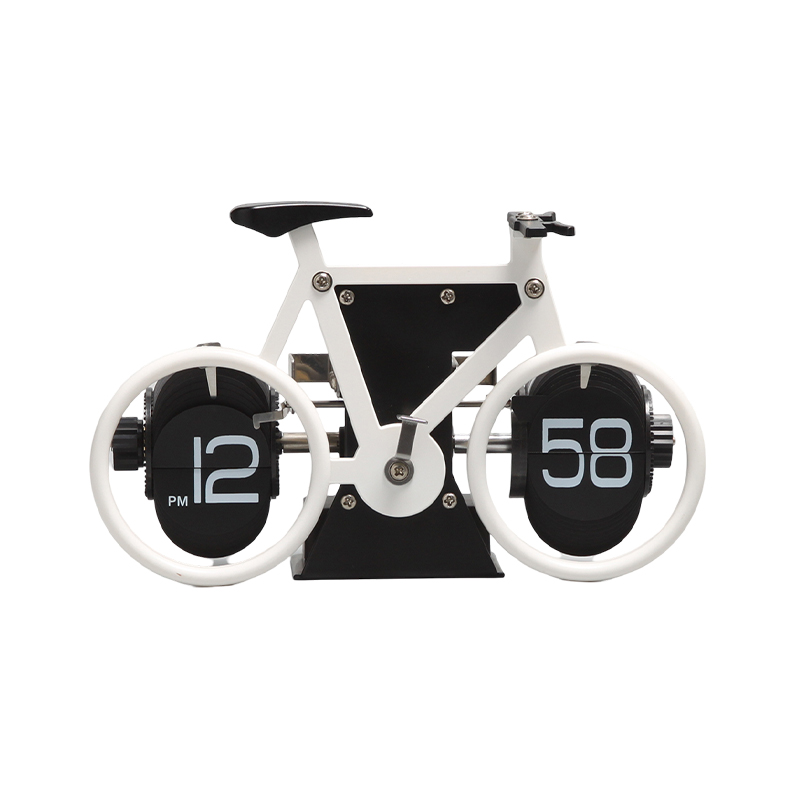Why do flip clocks mostly use a single-page flip design for digital displays?
Release Time : 2025-07-09
The digital display of flip clocks mostly adopts a single-page flip design, which first stems from the need to simplify the mechanical structure. The core function of the clock is accurate timing, and the single-page flip structure only needs one set of drive devices to complete the digital replacement - through gear transmission, the single page is driven to rotate around a fixed axis to achieve a 0-9 cycle display. If a multi-page stacking design is adopted, not only does it need to be equipped with an independent drive component for each page, but it also needs to solve the synchronization problem of multiple sets of mechanical structures, which will greatly increase the complexity of gear engagement and increase the probability of failure. For timing tools that pursue stability, the single-page design can minimize mechanical wear while ensuring basic functions. This is a typical embodiment of the "less is more" concept in industrial design.
Secondly, the single-page flip design can reduce energy consumption and cost. Whether it is the early spring drive or the modern battery power supply, the power reserve of the flip clock is relatively limited. The single-page structure is light in weight and has low rotation resistance. Each flip consumes only a small amount of energy, which can significantly extend the battery life; while the stacking weight of the multi-page design will increase the drive load, which may cause the clock to run slowly or stop frequently. In terms of manufacturing cost, the mold development, parts production and assembly process of single-page flip clocks are simpler and suitable for large-scale mass production. This is also the economic motivation for civilian clocks to choose single-page design since their birth - it can not only meet the basic needs of the public for timing tools, but also control the terminal price.
From the perspective of space utilization, the single-page flip design is more in line with the compact appearance requirements. One of the charms of flip clocks lies in their simple visual presentation. The thickness of a single-page number is usually only a few millimeters. After the shell is superimposed, the overall thickness can be controlled within 5 cm, which is suitable for placing on small spaces such as desktops and bookshelves. If a multi-page design is adopted, in order to avoid jamming when turning pages, a gap of at least 1 cm must be reserved between pages. After superposition, the thickness will increase exponentially, which not only destroys the lightness of the product, but also may lose portability. Especially for retro flip clocks, the combination of single-page design and metal and wooden shells can better highlight the aesthetic characteristics of "retro but not bulky".
The user experience of single-page flip is more in line with human perception habits. When the number flips from "3" to "4", the dynamic process of the single page is coherent and predictable - users can clearly see the rotation trajectory of the edge of the number and perceive the flow of time through visual residue. This gradual change is easier for the brain to accept than the sudden switching of multiple pages. Especially in a dimly lit environment, the shadow change of a single page flip allows users to quickly identify the number, while flipping multiple pages at the same time may produce messy visual interference. In addition, the "click" sound of a single page flip has a sense of rhythm. This auditory feedback forms a linkage with the visual change, which strengthens the user's perception of the passage of time and becomes the unique emotional value of the flip clock.
Historical heritage also makes the single-page design an industry consensus. Early mechanical flip clocks were born in the mid-20th century. Limited by the processing technology at the time, engineers could only achieve digital replacement through a single-page structure. This design has been verified by the market for decades and has gradually become the iconic feature of the "flip clock" in the minds of users - just like the shutter sound of a film camera and the texture of a vinyl record, single-page flipping has surpassed the function itself and become a cultural symbol. Even if modern manufacturers have the technical capabilities for multi-page design, they are more inclined to continue the single-page tradition to arouse users' emotional identification with retro industrial design. This path dependence is not uncommon in consumer electronic products.
From the perspective of troubleshooting and maintenance, the maintainability advantage of single-page design is significant. When the page turns are stuck or misaligned, the single-page structure only needs to check whether the drive gear is worn and the rotating shaft is loose, and the maintenance personnel can quickly disassemble and repair it with simple tools; while the fault points of the multi-page design may be distributed in the transmission system of different pages. When troubleshooting, the superimposed pages need to be disassembled one by one, which is not only time-consuming and laborious, but may also cause new mechanical problems due to improper operation. For users, the daily maintenance of single-page clocks is also simpler. You only need to clean the dust on the edge of the page regularly, and there is no need to worry about the jamming caused by dust accumulation in the gap between multiple pages.
Finally, the single-page flip design can adapt to a variety of digital fonts and display requirements. Whether it is Arabic numerals, Roman numerals or artistic fonts, the single-page carrier can fully present the outline of the characters, while the multi-page design may destroy the integrity of the numbers due to the obstruction of the page edge. For example, the symmetrical structure of the number "8" can be fully displayed on a single page. If it is split into two pages, the horizontal and vertical strokes need to be precisely aligned. A slight deviation will cause a visual gap. In addition, the single-page design allows another set of numbers to be printed on the back (such as switching between 24-hour and 12-hour systems), and the function can be expanded by adjusting the rotation direction. This flexibility is difficult to achieve with a multi-page design.







